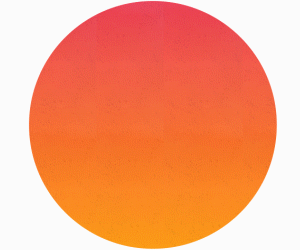However, a new effort is underway to help make coding more accessible for visually impaired students. In May last year, a research team at the Georgia Institute of Technology won an almost $3 million grant from the National Science Foundation to adapt EarSketch for visually impaired students. EarSketch is a free learning platform that teaches students how to code in Java or Python through music.
Luis Perez, disability and digital inclusion lead at CAST, says coding is “often a prerequisite for more advanced work in a variety of science, technology, engineering and math fields. Similarly, accessible coding may serve as an entry point into computer science. With the rapid growth of generative artificial intelligence, students who are blind should have that field as a career option.”
DISCOVER: Why schools must redesign learning to include learners of all abilities.
Blind Students Benefit from Coding in Mixed Learning Environments
Released in 2011, EarSketch was co-created by Jason Freeman, professor and chair of Georgia Tech’s School of Music, and Brian Magerko, professor of digital media at Georgia Tech.
Magerko, who now leads the new team (which includes researchers at Northwestern University and the University of North Texas), says that today, most tools developed to engage young students in programming are “specifically relying on visual engagement, whether through animation, interactivity or robotics. It’s very often not an accessible experience.”
The team is working with middle school students and teachers at the California School for the Blind to get their input and ideas for the EarSketch redesign, which will also address an urgent issue: allowing visually impaired and blind students who are in mixed and hybrid classes at nonspecialized schools to learn coding.
Perez agrees with this approach, saying that teachers at nonspecialized schools need to “have a better understanding of best practices for creating more accessible content at the point of need. Even small changes that a teacher can make to their materials can result in a considerable improvement in the experience of all students, including those who are blind.”
RELATED: What does assistive technology look like in one-to-one programs?
Researchers Look to AI to Improve Coding Education for the Blind
Though the project is just one year in, the EarSketch team is looking beyond screen readers and larger font sizes for a more holistic view of the programming experience.
“What are we doing right now that we could be doing better? One of the answers seems to be integrating AI into the learning experience,” says Magerko. This could look like a student having a verbal conversation with a large language model about an EarSketch project to determine which new functions to try or which audio clips to add to a project.
Other attempts to make coding more accessible for visually impaired students have been focused on tangible interactions, Magerko says, which was something his team explicitly wanted to avoid. “We wanted something low cost and not bespoke, something that could be used for that one kid in a classroom, finding the best way to engage people in affordable, portable and scalable ways,” he says.
DIVE DEEPER: Students with disabilities develop technology skills to expand career options.
How One Teacher at a School for the Blind Teaches Coding
Sue Sullivan, math and computer science teacher at Perkins School for the Blind in Massachusetts, has found success with a variety of approaches. After noticing coding camps and coding schools pop up everywhere, she thought that her own students should have the same access. So, she created her own mini coding curriculum at Perkins. Now “when my students show up for coding class, they are so excited, they get energized,” she says.
Sullivan designed her curriculum to include:
- Tactile components, such as adding a cup to a Sphero robot ball to produce more noise
- Translating material into Braille
- Finding tools that work with screen readers, such as Swift Playgrounds
- Using accessible tools such as KaiBot, CodeQuest, Code Jumper and Quorum (created in partnership with Code.org)
Sullivan believes that nonspecialized schools can help all of their students by integrating these approaches. “What’s good for one is good for all,” she says. “So, when you give students something that has a screen reader or something that has a tactile component to it, it’s not only benefiting a student with digital impairment, it’s probably benefiting other students in the classroom, because there are all types of learners.”











